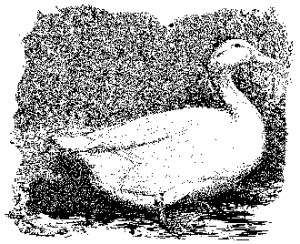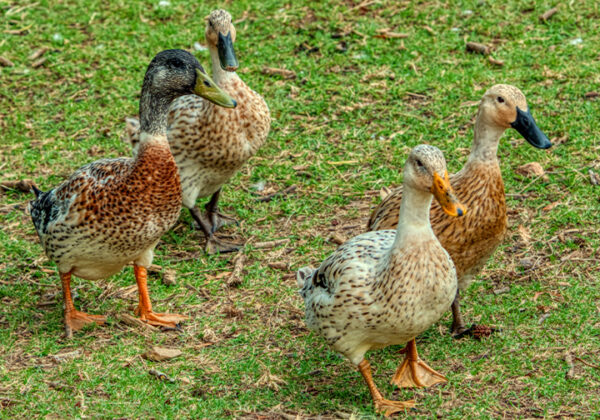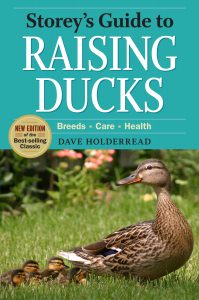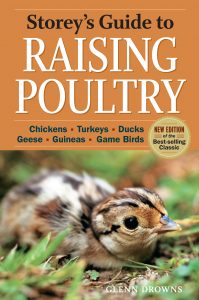
Breed Facts
Status:
Watch
Use:
Meat, Eggs
Egg Color:
White, Tinted
Egg Size:
Large
Weight:
Male – 5-5.5 lbs.
Female – 5.5-6.5 lbs.
Temperament:
Docile, Active, Inquisitive
Characteristics:
Do not fly; Good in both warm and cool climates; One of the quieter duck breeds
WELSH HARLEQUIN DUCK
The Welsh Harlequin breed originated in 1949 with two mutant, light-colored ducklings hatched from pure Khaki Campbells by Leslie Bonnet, a British Royal Air Force officer, writer, banker, magazine editor – and duck breeder. Bonnet and his wife developed a globally-recognized duck breeding program. Bonnet published Practical Duck-Keeping in 1960. This guide was considered the “go-to” resource for duck husbandry for many decades.
In 1968, John Fugate imported hatching Harlequin eggs to Tennessee, but by 1980, descendants of the original imports were confined to two small flocks. To broaden the gene pool, breeders imported additional Harlequins in 1982, and in 1984 they began to offer birds for sale in the US. The Silver variety of the Welsh Harlequin was accepted by the American Poultry Association Standard of Perfection in 2001.
The Welsh Harlequin is a lightweight breed weighing 5-5.5 lbs. Harlequins are streamlined, with relatively long bodies, medium-width backs, rounded chests, moderately full abdomens, and wide-spaced legs. Their necks are topped with trim, oval heads that sport medium-long, slightly concave bills. The color and patterning of the Harlequin are complex. The drake’s head is greenish-black, shoulders reddish-chestnut frosted with white, and breast creamy with reddish-chestnut. The upper back has a tortoiseshell of cream, white, brown, and chestnut while forewings are cream-white and reddish-brown, with a shiny green and bronze cross-band. The tail is blackish/bronze edged in white, the legs and feet are orange, and toenails are brownish-black.
“The duck has a creamy white head with brown stippling. There is often delicate light rust or burnt orange blush to their head, neck, and breast. The crown of the head typically has more brown stippling than the rest of the head. Her body is creamy white with buff and brown-green or bronze bands on her wings. Her tail is a mixture of creamy white and brown. Her legs are orange when young, and brown when older. Toenails are brownish-black. Welsh Harlequin duck and drake ducklings may exhibit a subtle sex-linked difference in bill color at birth.” (Holderread)
Harlequins are primarily raised for their wonderful practical attributes. “They are highly adaptable, outstanding layers producing 240-330 white-shelled eggs yearly, active foragers, excellent producers of lean meat, beautifully colored, and pluck almost as cleanly as white birds when dressed for meat.” (Holderread)
When choosing a Welsh Harlequin breeding bird, select “robust, strong-legged birds that are free of physical deformities, heavy layers, and of correct body type and color. To help perpetuate the authentic Harlequin, avoid the following characteristics: more than a half-pound above or below typical weights; short, blocky bodies; large coarse heads; distinct Mallard-like facial stripes; light-colored bills in ducks; and poor producers.” (Holderread)
They do not truly fly. They do well in both heat and cold if they have suitable housing and access to clean water; they are a relatively healthy breed. They enjoy interacting with people and are not a flighty breed. They are inquisitive and easily trained to free range during the day and come to be put up in the evening. They are one of the quieter duck breeds with the ducks being noisier than the drakes.
Breed Bulletin #8503: Welsh Harlequin Ducks. Holderread, Dave. The Duck Preservation Center, Corvallis, OR 1985.
Storey’s Guide to Raising Ducks. Holderread, Dave. Storey Publishing, Pownal, VT 2001, 2011.
Did you know:
Heritage breeds are being raised on more than 4,000 farms, ranches, and backyards across America. Still, new breeders must be recruited to protect and expand rare livestock and poultry populations. America’s farmers are aging; future generations of breeds need future generations of breeders. That’s why Livestock Conservancy microgrants now include a Youth Division to encourage tomorrow’s breed stewards. Click here to invest in the future with a gift today.
You may be interested in…

Breed Facts
Status:
Watch
Use:
Meat, Eggs
Egg Color:
White, Tinted
Egg Size:
Large
Market Weight:
4.5-5 lbs
Temperament: Docile, Active
You may be interested in…




